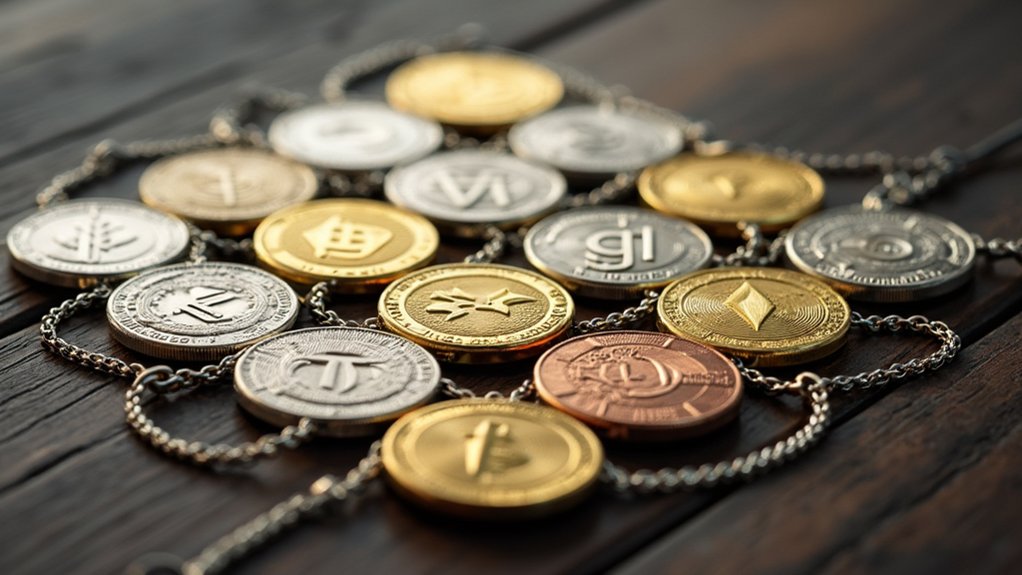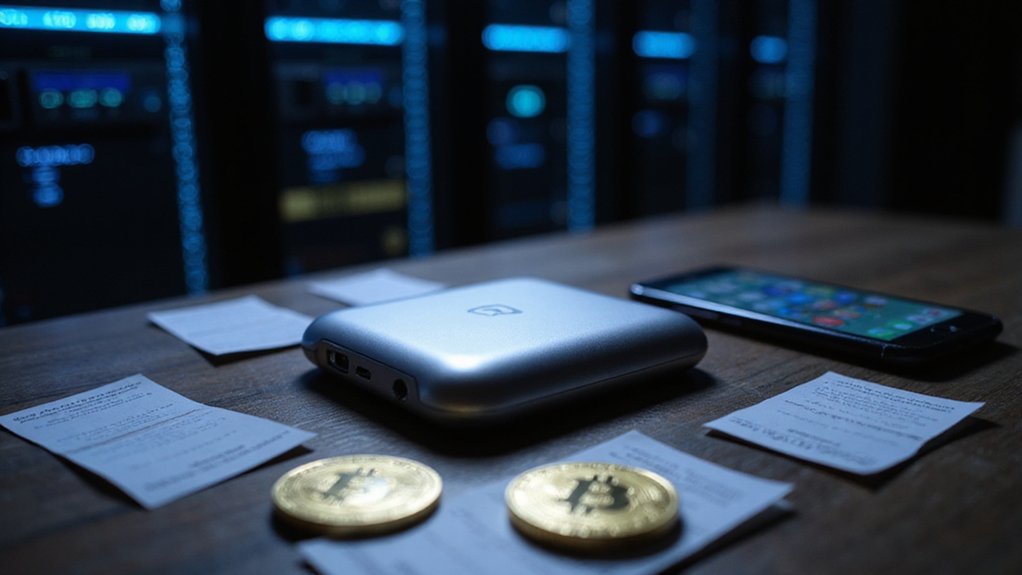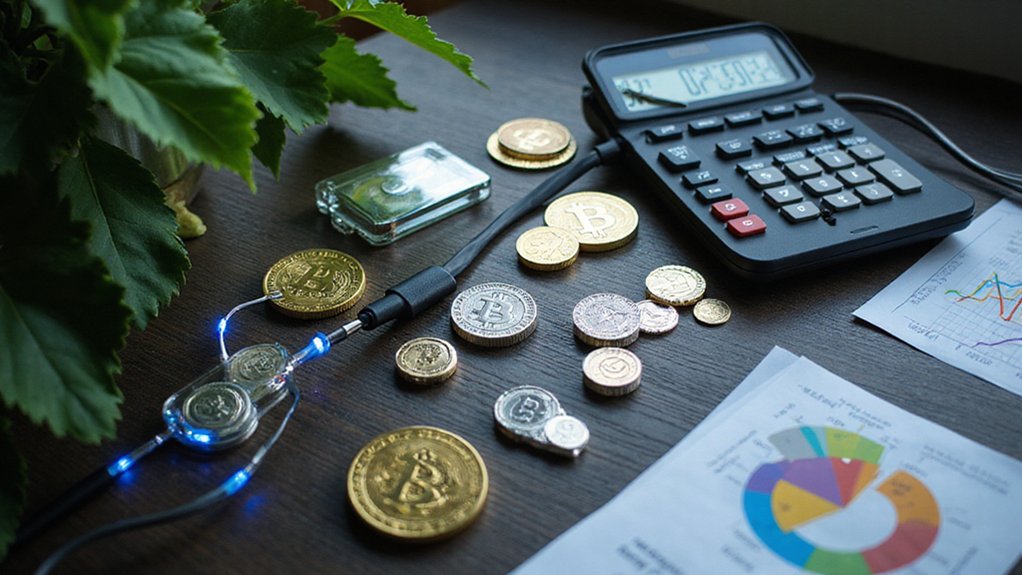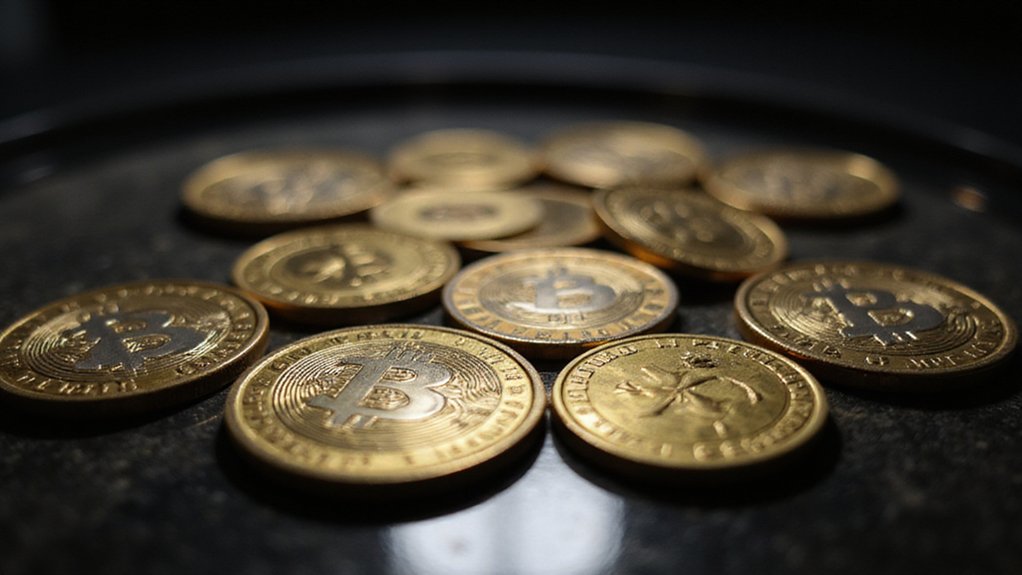Cryptocurrency token standards serve as the constitutional frameworks governing digital asset behavior across blockchain ecosystems, with ERC-20 handling fungible tokens like currency exchanges, ERC-721 managing unique non-fungible assets, and hybrid standards like ERC-1155 combining both functionalities. These protocols prevent the fragmentation that would otherwise create incompatible blockchain dialects, while alternative networks deploy their own variations—TRC-20, BEP-20—mimicking Ethereum’s architectural blueprint for enhanced performance and interoperability across platforms that somehow manage billions in value.

The digital asset ecosystem operates on a foundation of technical specifications that, while possessing all the aesthetic appeal of municipal building codes, prove remarkably essential in determining whether a cryptocurrency project succeeds spectacularly or implodes with the theatrical flair of a poorly planned fireworks display.
Token standards represent the unsung architects of blockchain functionality, establishing the fundamental rules governing how digital assets behave within their respective ecosystems.
Token standards function as the invisible bureaucrats of blockchain, quietly dictating digital asset behavior with all the glamour of municipal zoning ordinances.
These protocols define essential operations—token creation, transfer mechanisms, and cross-platform interactions—with the methodical precision typically reserved for tax code amendments.
Without such standardization, the cryptocurrency landscape would resemble a linguistic Tower of Babel, where tokens speak incompatible dialects and wallets regard foreign assets with the suspicion of medieval border guards.
Ethereum’s ERC standards dominate this regulatory framework, with ERC-20 serving as the workhorse for fungible tokens like Maker (MKR) and Basic Attention Token (BAT).
The standard handles mundane yet critical functions: balance inquiries, transfer authorization, and spending approvals—essentially the digital equivalent of checking account operations, albeit with considerably more volatile price swings. These standards derive their naming convention from the Request for Comment process, which enables developers to propose improvements and achieve consensus on blockchain operations.
Non-fungible tokens operate under ERC-721, which treats each asset as a unique snowflake (though potentially with more monetary potential than frozen precipitation).
This standard powers the bewildering world of digital collectibles, where pixelated artwork commands prices that would make Renaissance patrons question their investment strategies.
ERC-1155 attempts diplomatic compromise, combining fungible and non-fungible capabilities within a single framework—a technological Switzerland, if you will. This innovative standard enables efficient transactions by allowing different token types to be exchanged simultaneously in a single operation.
Meanwhile, ERC-777 addresses ERC-20’s limitations with enhanced smart contract functionality, representing iterative improvement rather than revolutionary transformation. These self-executing programs automatically execute predefined actions when specific conditions are met, eliminating intermediaries and enhancing transaction security.
Alternative blockchains maintain their own standards: TRON’s TRC-20 and Binance Smart Chain’s BEP-20 mirror Ethereum’s approach while claiming superior performance metrics.
This proliferation guarantees interoperability across platforms, allowing tokens to traverse blockchain boundaries with diplomatic immunity.
The standardization process involves rigorous community testing, transforming theoretical proposals into battle-tested protocols.
This collaborative approach enhances security while accelerating development timelines—a rare instance where committee design produces elegant solutions rather than bureaucratic monstrosities.
Token standards ultimately democratize blockchain development, providing reliable infrastructure for innovation while maintaining the technical rigor necessary for handling assets worth billions of dollars.
Frequently Asked Questions
Can I Convert Tokens From One Standard to Another?
Converting tokens between standards requires intermediary infrastructure—bridges, wrapped tokens, or centralized exchanges—since different blockchain ecosystems operate incompatible protocols.
While technically feasible through these mechanisms, the process introduces counterparty risks, additional fees, and potential smart contract vulnerabilities.
Token bridges lock original assets while minting equivalents on target chains, though not all tokens support conversion due to technical constraints or insufficient market demand for cross-chain functionality.
Which Wallets Support Multiple Token Standards?
Several wallets demonstrate remarkable versatility in supporting multiple token standards.
Trust Wallet handles both ERC-20 and BEP-20 tokens across different blockchains, while Ledger Nano X’s hardware security extends to thousands of cryptocurrencies spanning various standards.
MetaMask, despite its Ethereum origins, accommodates different standards through network configurations.
Exodus Wallet supports over 260 assets, and SafePal manages diverse token types—proving that wallet fragmentation isn’t entirely insurmountable.
How Do Token Standards Affect Transaction Fees?
Token standards greatly influence transaction fees through their underlying blockchain architecture and complexity requirements.
ERC-20 tokens on Ethereum incur gas fees that fluctuate with network congestion, while simpler standards like Bitcoin’s native transactions typically cost less.
Complex smart contract interactions demand higher computational resources, inflating fees accordingly.
Standards operating on newer blockchains often feature lower costs through improved scalability solutions, though this advantage diminishes during peak demand periods when priority mechanisms favor higher-paying transactions.
What Happens if I Send Tokens to Wrong Address?
When tokens are sent to an incorrect address, they become irretrievably lost—blockchain’s immutability guarantees no central authority can reverse the transaction.
If the recipient address is active and cooperative, recovery might be possible through direct contact.
However, tokens sent to burn addresses, inactive wallets, or non-existent addresses are permanently inaccessible.
This harsh reality underscores why experienced traders always send test transactions first, despite the additional fees previously discussed.
Do Token Standards Impact Investment Returns or Profitability?
Token standards greatly influence investment returns through multiple mechanisms.
Standardized tokens enjoy enhanced liquidity via broader exchange compatibility, reducing slippage and transaction friction that erodes profits.
They attract institutional capital by demonstrating adherence to established protocols, while enabling participation in yield-generating DeFi ecosystems.
Perhaps most critically, standards mitigate catastrophic losses from exploits—because nothing quite destroys returns like watching one’s investment vanish through poorly implemented smart contracts.









